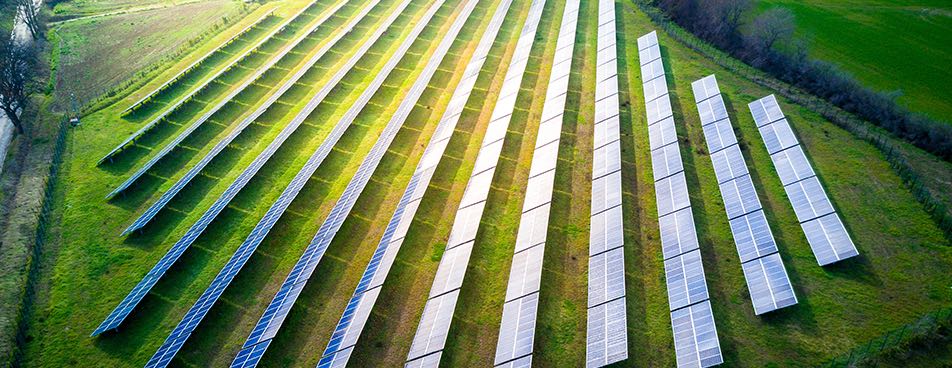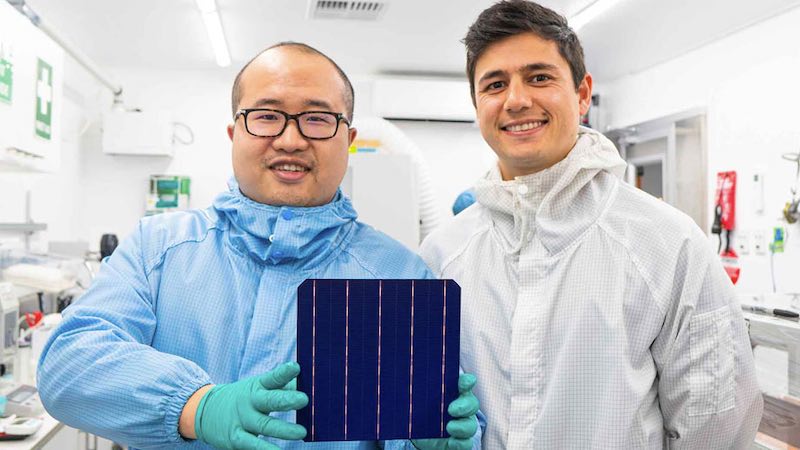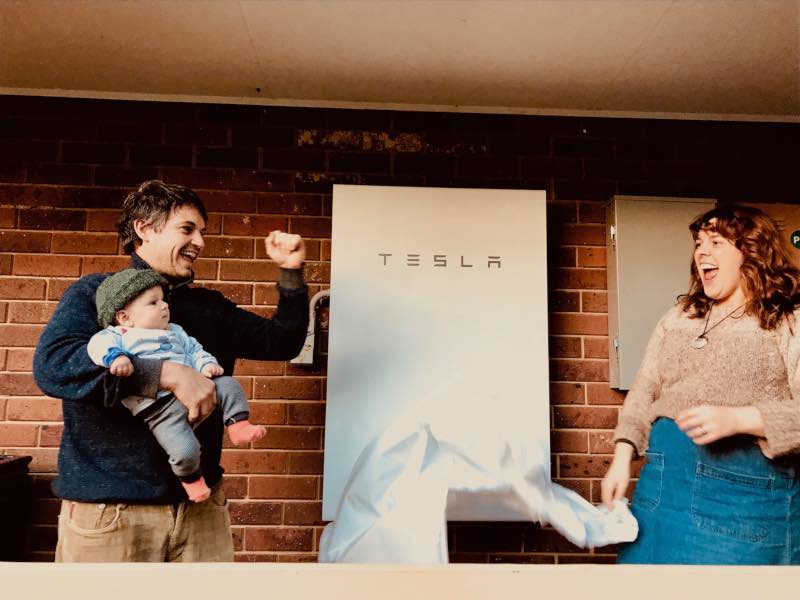@Tes La Ferrari posted this in the main investor thread:
Tesla 565 MWh Megapack Project in Hawaii Is Celebrated with Groundbreaking Ceremony
Tesla 565 MWh Megapack Project in Hawaii Is Celebrated with Groundbreaking Ceremony
You can install our site as a web app on your iOS device by utilizing the Add to Home Screen feature in Safari. Please see this thread for more details on this.
Note: This feature may not be available in some browsers.
perhaps the proposed, point to point trip of Starship next month,@Tes La Ferrari posted this in the main investor thread:
Tesla 565 MWh Megapack Project in Hawaii Is Celebrated with Groundbreaking Ceremony
This is a tremendous idea, and IMO likely already in the works. Elon wouldn't send this up with nothing interesting in it, and what could be better? Perhaps it's an entire autonomous solar+megapack install rover that will barge to Kaua'i and install it's own massive microgrid?perhaps the proposed, point to point trip of Starship next month,
Boca Chica, Texas to Kaua’i, Hawaii, could deadhead a few mega packs as a demo load……
(90 minutes to anywhere on the planet….)
the launch has been delayed until january, 2022, no exact time NETThis is a tremendous idea, and IMO likely already in the works. Elon wouldn't send this up with nothing interesting in it, and what could be better? Perhaps it's an entire autonomous solar+megapack install rover that will barge to Kaua'i and install it's own massive microgrid?



There will be many cases when the inventors of a great new way of making solar panels don't have the capital, and manufacturing expertise, required to scale up volume production...SunDrive is aiming to have a demonstration module using its cells by years’ end and is building a pilot 20-megawatt production line to be completed by 2022.

Half of world’s planned solar projects in 2022 at risk due to rising costs
Surge in silicon and shipping costs is causing a big rise in solar module costs, and may cause half of world’s PV projects to be delayed.reneweconomy.com.au
I've had a niggling feeling for sometime that perhaps Tesla needs to a "first principles" look at solar manufacturing.
What I have in mind is a "Solar Day" equivalent to "Battery Day", to be worthwhile Tesla would need some breakthroughs which reduce the amount of energy needed to make solar panels, reduce the cost, and make the manufacturing process more efficient..
IMO this is potentially needed for the following reasons:-
We have seen the Solar Roof is a drag on the energy business margins... partially that is just the labour cost and complexity of the roofs. Partially that is the cost of the solar roof, and IMO importing cells from China isn't ideal...
- Solar panel manufacturing might not keep up with demand..
- The world is too dependent on Chinese manufacturing.
- Tesla needs to lower the price, and lock in good volumes on regular panels...
- Tesla needs to lower the price of the solar roof..
There is lots of great solar R&D going on world wide, for example:-

Australian solar innovator backed by Cannon-Brookes claims world efficiency record
Australian solar start-up founded in a garage and backed by billionaire investors included Mike Cannon-Brookes, claims new world solar efficiency record.reneweconomy.com.au
There will be many cases when the inventors of a great new way of making solar panels don't have the capital, and manufacturing expertise, required to scale up volume production...
Previously I didn't think this was an issue, but China might start to become a bottleneck, energy and labour costs in China might start to rise, global shipping might remain a bottleneck.. More local solar production in the US and Europe might be a step forward.
OT @UkNorthampton………I would love an intelligent near PassivHaus home where excess refrigerator heat is recovered, over-provision of solar & storage, local virtual grids/power plants.
Passivhaus designs rely on body heat. Figure 100 watts per person. The houses are virtually airtight except for designed air vents with built-in heat exchangers. As a practical matter most add a small supplemental heater at these air vents for long, cloudy cold spells. They work well in a German climate, and the upfront HVAC savings offset most/all the added construction cost for insulation and such. They don't work so well as you go farther north, due to a lack of winter sun. And further south in cooling climates the last thing you want is to conserve body heat!At the Solar Decathlon a few years ago, there was an 800sqft house that could be heated (their words) by a 1,600watt hair dryer it was so tight against air leaks, like a thermos bottle, but care needed to be taken for breathing air.
if you look at the evolution of passive and active solar houses since the late 1950’s, you can follow the changes how the designs changed as materials become better..Passivhaus designs rely on body heat. Figure 100 watts per person. The houses are virtually airtight except for designed air vents with built-in heat exchangers. As a practical matter most add a small supplemental heater at these air vents for long, cloudy cold spells. They work well in a German climate, and the upfront HVAC savings offset most/all the added construction cost for insulation and such. They don't work so well as you go farther north, due to a lack of winter sun. And further south in cooling climates the last thing you want is to conserve body heat!

What it shows is that by 2025 the combined output of wind and solar is on track to exceed total entire electricity demand for a few hours in the middle of the day over Quarters 3 and 4 of the year.
Amazing that a 5000 km cable is still cheaper than local NGNot a Tesla project as of yet, but interesting to see these megaprojects attempt to move forward.
This project would run a massive underwater cable to Singapore. Currently Singapore gets nearly all it's electricity from natural gas, I assume LNG.
This would be quite a bit cheaper.
Sun Cable unveils staggering scale of world's biggest solar and battery project | RenewEconomy
reneweconomy-com-au.cdn.ampproject.org
Lovely - more details in article, but this is key, showing what's possible. North Africa / Ukraine could do similar for Western Europe. Add wind, plenty of high voltage transmission and overbuild. Abundant and often free energy is possible, at other times chargeable.Not a Tesla project as of yet, but interesting to see these megaprojects attempt to move forward.
This project would run a massive underwater cable to Singapore. Currently Singapore gets nearly all it's electricity from natural gas, I assume LNG.
This would be quite a bit cheaper.
Sun Cable unveils staggering scale of world's biggest solar and battery project | RenewEconomy
reneweconomy-com-au.cdn.ampproject.org
The plan is to provide power to Singapore via a 4,200km sub-sea cable, but also to boost the local manufacturing industry to mop up the surplus of low-cost solar power that will be delivered into Darwin.
Here's another project from Morocco to the UKLovely - more details in article, but this is key, showing what's possible. North Africa / Ukraine could do similar for Western Europe. Add wind, plenty of high voltage transmission and overbuild. Abundant and often free energy is possible, at other times chargeable.

 electrek.co
electrek.co
Here's another project from Morocco to the UK
It should be wind, solar, storage and lots of long-range high-voltage transmission to even it all out. Utterly doable, economically viable, required to combat climate change and great for energy securitySaw that one. Seemed a strange idea since the British isles have so much offshore wind potential.
My assumption has always been irl/Scot/UK would end up at like 200% offshore wind and would export a bunch.
Gonna be interesting to see how this all shakes out, these projects are mammoth but easy to put together for experienced developers.
I live in an up-and-coming part of Philly, where developers know they can simply print money on any project. They pay off city councilpeople and throw up highly irrational projects that aren't anything near what people want. Hopefully this renewables gold rush doesn't go that way.


